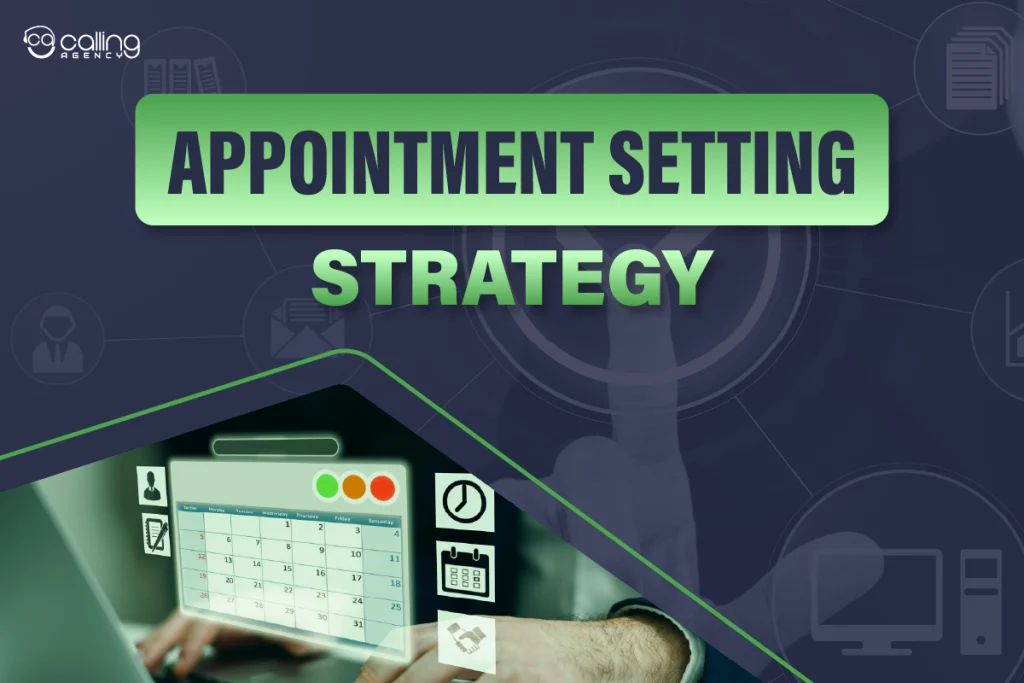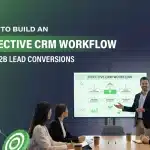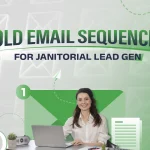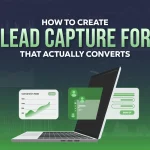In the sales, lead, and lead generation industry, appointment setting is a kind of bridge to align them together. Almost every business in this world tends to make sales, so appointment setting improves those sales and takes your business one step ahead. It has been a game-changer for a long time in the B2B and B2C industries. Different business uses different kinds of strategies to set an appointment with potential customers.
Why Appointment Setting is Critical in B2B Sales?
B2B sales appointment setting is critical because it filters out cold and unqualified leads and reduces your time invested in the wrong prospect. B2B sales is one of the most complex tasks among B2C (Business-to-Consumer), B2G (Business-to-Government), and B2B2C (Business-to-Business-to-Consumer), so once you set an appointment and spend time on a quality meeting, it drives you to light value customers and creates a long sales cycle. Let’s walk you through some key points that make it clear why appointment setting in B2B sales is a critical aspect.
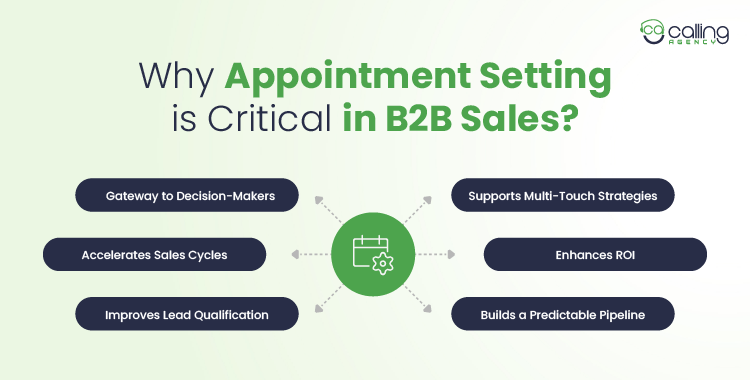
- Gateway to Decision-Makers
- Accelerates Sales Cycles
- Improves Lead Qualification
- Supports Multi-Touch Strategies
- Enhances ROI
- Builds a Predictable Pipeline
Those essentials prove how important appointment setting is in the field of B2B sales. B2B sales refers to dealing with businesses, and it’s more complex and sensitive compared to dealing with a user-level prospect.
Fundamental Components of a Strong Appointment Setting Strategy
An expert-level appointment setting has some criteria, so schedule them. You dont see an interested prospect and schedule a meeting. It may waste your time and energy, so go through those core or fundamental components before approaching the appointment.
Ideal Customer Profile (ICP) & Buyer Personas
ICP is a strategic framework at the company level that helps identify the type of organization most likely to benefit from your product or service. This filters out unsuitable companies based on:
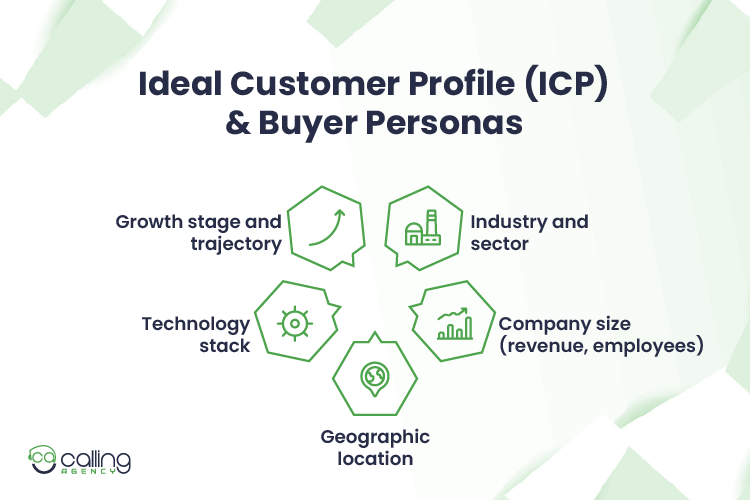
- Industry and sector
- Company size (revenue, employees)
- Geographic location
- Technology stack
- Growth stage and trajectory
Budget capacity, on the other hand, a buyer persona is one or more people who influence the decision of taking service or buying a product, such as decision makers or C-level executives.
An ideal customer profile (ICP) in appointment setting helps you find the most fit company among a lot of unfit companies, according to industry, company size, location, etc., and an ideal customer profile. Choosing an actual buyer persona is also important for setting an appointment because someone who can’t make a decision may waste your time.
Prospect Research & Intelligence
Researching prospects individually can be time-consuming, but shifting your focus to the benefits of setting a quality appointment has non-negligible significance. Prospect research and intelligence allow you to understand needs, pain points, and goals to personalize. Now, let’s see how you can measure company-level intelligence and individual-level intelligence.
Company-Level Intelligence:
- Recent news, funding rounds, or acquisitions
- Growth indicators and expansion plans
- Current pain points and challenges
- Competitive landscape position
- Recent initiatives or strategic shifts
Individual-Level Intelligence:
- Professional background and career trajectory
- Recent posts or content shared on social media
- Speaking engagements or publications
- Mutual connections or warm introduction paths
- Current projects or responsibilities
Application: This intelligence helps you to create personalized messaging that triggers with specific prospect situations, showing a genuine understanding rather than generic pitches.
Compelling Messaging & Value Proposition
Your messaging must immediately communicate value and relevance to the respective prospect. Let’s talk about strong appointment-setting messages, including:
- Clear, concise value proposition tailored to the prospect’s role
- Specific pain points you solve (referenced from research)
- Proof points (case studies, metrics, social proof from similar companies)
- Compelling reason to meet now (urgency without pressure)
- Clear, simple call-to-action
Now you can follow some suggestions that can become your best practice for setting an appointment with a compelling message and value proposition.
- Focus on the prospect’s outcomes, not your product features
- Use the prospect’s language and industry terminology
- Keep initial messages brief (under 150 words for email)
- A/B test different messaging approaches
- Customize for each channel (email vs. LinkedIn vs. phone)
Multi-Channel Outreach Cadence
A systematic, multi-channel approach in several channels improves response rates significantly. Because different prospects use different channels for communication. So make sure you dont miss a potential prospect due to a less channel approach. A well-designed cadence includes:
Channel Mix:
- Phone calls
- Direct message
- Video messages
- Social media outreach
Let’s discuss structured multichannel outreach with a planned strategy and day steps. Cadence structure:
- Day 1: Initial email or social media connection request
- Day 3: Follow-up email with additional value
- Day 5: Phone call attempt
- Day 7: Social media message or engagement
- Day 10: Final email with a different angle
- Day 14: Breakdown email or content share
Critical Considerations:
- Change your approach in each interaction point (don’t repeat the same message)
- Provide value in every interaction
- Track engagement and adjust timing based on prospect behavior
- Know when to pause or disqualify non-responsive prospects
Lead Qualification & Filtering
If you put similar effort into all prospects, then you are wasting your time on the wrong prospect. Not every interested prospect deserves an appointment because some of them are non-qualified, some are not decision makers, etc. You use a lead qualification framework to filter out unqualified leads. Let’s see some examples of lead qualification frameworks:
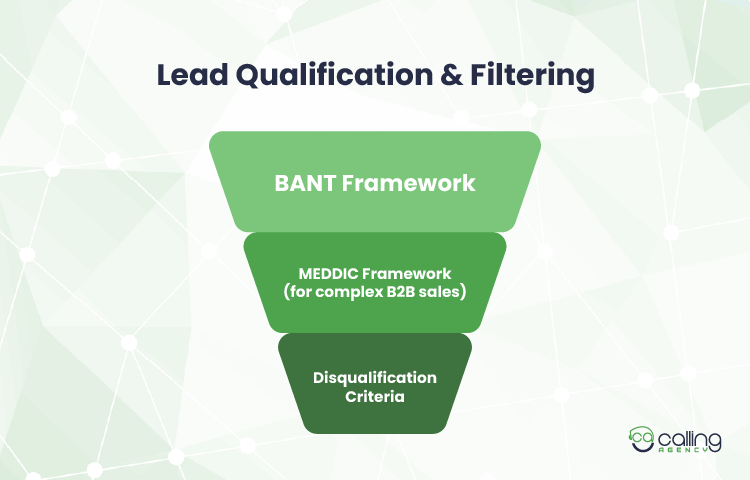
BANT Framework
- Budget: Does the potential prospect have an allocated budget for a specific service or product?
- Authority: Are you speaking with a decision-maker, decision influencer, or C-level executives?
- Need: Does the prospect have a clear pain point you solve or sell a solution-based product?
- Timeline: Is there a defined timeframe for implementation that can be sensitive later?
MEDDIC Framework (for complex B2B sales)
- Metrics: What economic impact can you provide to the prospect?
- Economic Buyer: Who controls the budget of your target ICP?
- Decision Criteria: What factors influence your potential customers’ choice?
- Decision Process: What is your lead’s buying process?
- Identify Pain: What specific problems do your prospects face?
- Champion: Do you have internal support?
Disqualification Criteria
- Prospects outside your ICP parameters
- Lack of budget or authority
- No clear timeline or urgency
- Competing priorities that take precedence
- Poor cultural or strategic fit
Lead scoring is also a good choice to weed out your cold or unqualified leads to reduce your extra works that bring nothing but burden to you.
Scheduling & Confirmation Process
The final step of appointment setting, getting the meeting booked, requires conflict-free execution. Dont implement this in a rush, because mischeduling can waste both ends’ time and effort, which may lead to a negative impression of your brand to prospects.
Best Practices
- Use scheduling tools (Calendly, HubSpot Meetings, Chili Piper) to eliminate back-and-forth.
- Offer multiple time slot options across different days
- Be flexible with timing to accommodate prospect schedules
- Send immediate calendar invitations with clear agendas
- Include preparation materials or questions in advance
Confirmation Protocol
- Send an automated confirmation email immediately after booking
- Include meeting purpose, agenda, and expected outcomes
- Provide joining instructions (Zoom link, dial-in, location)
- Send a reminder 24 hours before the meeting
- Send final reminder 1 hour before (optional, for important meetings)
Reducing No-Shows
- Confirm via email and calendar invite
- Request a confirmation response from the prospect
- Build anticipation by sharing a relevant case study or insight before the call.
- Make rescheduling easy if conflicts arise
- Follow up immediately if the prospect misses the appointment
So, at the end of this section, you have gone through every single core component of appointment setting strategies. Now you can execute them step by step after learning from the section below.
Step‑by‑step Execution Framework
If you want to book an appointment with high-value prospects, you need to follow a planned and proper strategy. With any strategy, you get a few, but in the long run, you will suffer. So, for a long sales cycle and getting a high-value appointment, you can follow the steps below.
Step 1: List Building & Contact Identification
To build your potential customer list, you can:
- Define ideal customer profile(ICP): identify your potential customers by analyzing company size, requirements, industry, location, etc, to find out who are most likely to buy your product or service.
- Pull data sources: you can try utilizing online directories, professional databases, or social media like LinkedIn to find your best-fit prospect.
- Utilize your network: you can increase your list by letting your existing customers know and offering referrals to your professional network.
- Use your own marketing strategy: beyond all of your ways of list building, you can create a marketing strategy to improve lead collection through methods like lead capture form, webinar, report book download, etc.
Identify the right contact.
- Find decision makers: This is so important to find the buyer persona who has the authority to make purchasing decisions, or someone who can directly influence the decision.
- Gather effective information: except for the company name, you need to gather some more information, such as the contact’s name, their professional title, direct phone number, and email address.
- Focus on relevance: for example, if you have a prospect’s number and call them and greet them with their name, then it shows you have homework, and it improves personalization.
Once you have created a prospect’s contact list, you can move to the next step.
Step 2: First Outreach (Warm Intro or Cold Approach)
Warm Introduction: Warm introduction refers to when you reach out to someone through a text-based message or a call, you can introduce them by putting a reference with something mutual or relevant. For example,
| Hi Mr. Saki,
I came across your Reddit post mentioning you are looking for a B2B appointment setting service, and a conversation would be valuable because we offer exactly the same service with better charges and effectiveness. To know about our services, you can visit our website, which I have attached below for your easy access. Thank you so much James limbert |
Cold Approach: Imagine you have reached out to someone with a box of cigarettes with a 5% discount, and you are approaching with so excitement and more things, but the scene is that the respective person dont not even smoke and hates it, then you are going to get in trouble instead of making sales. That is a cold approach, and you need to research the prospect’s pain point and demand, then approach them.
Now you are well concerned about the distinction between a warm intro and a cold approach. Your first outreach should be personalized, with a warm introduction that adds value to the potential customers.
Step 3: Follow-up Sequence (2nd, 3rd Touches, Etc.)
Once you have completed initial contact, you need to take a step of follow-up sequences in a few more steps. Dont just stop after initial contact because your prospects can forget things or commitments. It’s your responsibility to keep them updated or to send reminders.
- Touch 2: Soft reminder (2-3 days later). After initial contact, dont follow up again within 24 hours. It’s better to follow up within 2 to 3 days again, where you can mention the reference of the previous discussion.
- Touch 3: Add value (case study, testimonial, stat). Take 4-5 days to send the 3rd touch to your prospect. Your message content should carry worth reading or value to the customers. You can link a case study, testimonial, or highlight some statistics.
- Touch 4: Detachment message (7-10 days later). After three cognitive outreach in a moderate interval, if your prospect does not respond or you find an appointment setting is not fit for that prospect, then send a break-up message.
Step 4: Engage & Qualify (via Call or Email Responses)
Probing questions are mandatory to find out your prospects’ interests, pain points, budgets, and many more aspects tha may help you during the appointment.
- Ask discovery questions to understand their needs.
- Confirm they match your ICP.
- Identify urgency, budget, and the decision-making process.
Step 5: Book the Appointment (Confirm Slot, Agenda)
Once your prospects agree to book an appointment and fit your criteria, then offer 2 to 3 slots that they can adjust, and a few more things to do, such as:
- Offer 2–3 time slots.
- Confirm agenda and participants.
- Send a calendar invite with the meeting link and prep materials.
Step 6: Post-appointment Follow-up & Handoff to Sales
- Send a thank-you email with a recap.
- Share relevant resources or next steps.
- Introduce your sales rep or account manager for deeper engagement.
Post appointment follow-ups actually depend on your prospects’ types, such as if you are working on B2B appointment setting or B2C, or otherwise, then the interval between follow-ups can be different for each type of prospect.
Best Practices & Tips to Boost Success for Appointment Setting
Look, getting people to actually meet with you is not rocket science. There are just a few things that consistently work. Think about your own life for a second. When someone asks you to grab coffee or jump on a call, what makes you say yes? Usually, it’s because they seem genuine, they respect your time, and honestly, they just make it easy to say yes. Business meetings? Pretty much the same deal.
Personalize at Scale (Without Losing Your Mind)
We have all gotten those copy-paste messages that scream, “I’m sending this to 500 people.” They feel meaningless, and you can spot them from a mile away. But let’s be real, you can’t write a completely unique dissertation for every prospect either. You would never get anything else done.
Here is what actually works:
Write one solid core message, then spend 30 seconds adding something specific to each person. Pull up their LinkedIn. Check their company news.
- Did they just launch something?
- Hire someone new?
- Move offices?
Drop that into your opening: “Congrats on the Series B, saw the announcement last week!”
That one sentence changes everything. Suddenly, you are not just another spam message. You are someone who actually paid attention. The rest of your email can follow your template, but what about that personal hook? That’s what keeps them reading instead of hitting delete.
Respect Gatekeepers and Just Be Straight With Them
Receptionists and EAs? They deal with salespeople literally all day. A lot of those salespeople try to be clever or avoid talking about why they are really calling, which is exactly why gatekeepers have their guard up constantly.
Want the actual secret? Drop the games. Be honest and respectful. When someone picks up, just tell them what you are doing: “Hey, this is Tom. I work with restaurants on food cost management. Who would be the right person to talk to about that?”
Straight talk. No runaround. These folks have more influence than you would think. If you treat them well, they might actually become your advocate inside the company. But if you are shady or dismissive? You are done.
And please, keep it tight. Nobody wants your full pitch when they answer the phone.
- What do you want?
- Who do you need to talk to?
That’s it. The same goes for emails; nobody’s reading your novel. Get to the point. Busy people will genuinely appreciate you not burying the lede in paragraph seven.
Always, Always Propose Specific Next Steps
Here is where so many people fumble at the goal line. You have a great conversation, build some rapport, and then you end with something vague like “Let’s connect soon” or “Reach out when you have some time.” You just put all the work on them. Now they need to check their calendar, figure out a time, and circle back to you. That’s a lot of friction. They get pulled into something else, and you become tomorrow’s problem that never quite gets solved.
Flip the script. Suggest actual times: “I have got Tuesday at 2, Wednesday at 10, or Thursday afternoon open. What works better for you?”
Now they just pick one. That’s so much easier, and easy things actually happen. Even better? Use a calendar link tool like Calendly. They can click and book right there, even if it’s 11 PM and they are finally getting through their inbox. Every single interaction should end with a clear, simple next step. Don’t make people think too hard about what comes next.
Track the Numbers That Matter
Most people have no clue whether they are actually improving at this stuff. They just keep grinding and hoping for the best. But you really should track a few basic metrics. Start with the response rate. If you are sending 100 emails and getting three replies, something is off. If you are getting 20? You are doing something right. Then look at the conversion to meetings. Maybe people are responding, but they are not actually booking time. That means your ask needs work.
Finally, track what happens after the meeting. You could book 50 appointments, but if none of them go anywhere, you are just filling your calendar with dead ends. Write this stuff down weekly. Watch the trends. Numbers tell you the truth. Maybe you will notice that Tuesday emails crush Friday emails. Or maybe people in one industry respond way better than another. That’s gold.
Keep Testing and Tweaking
The best appointment setters never stop experimenting. They are constantly testing different approaches to see what moves the needle. Try two subject lines. Send version A to half your list, version B to the other half. Which one gets opened more? Run with that one. You can test basically everything, opening lines, message length, send times, and calls-to-action.
Just change one variable at a time. If you change five things at once, you will have no idea what actually made the difference. This doesn’t need to be some elaborate science experiment. Try something slightly different. Did it work better? Keep it. Worse? Try something else. You are not trying to nail perfection today; just get 2% better every week. That compounds like crazy over time.
Forget “Spray and Pray”, Go Narrow and Deep
The biggest trap? Blasting out messages to anyone with a pulse and praying someone bites. It’s exhausting and it doesn’t work. Instead of reaching out to 1,000 random contacts, identify 50 really solid prospects. People who genuinely fit what you are offering, who have the actual problems you solve. Then invest real time in understanding and reaching those 50 people.
One meeting with the right person is worth infinitely more than 100 meetings with people who’ll never buy. Figure out what your ideal customer actually looks like, industry, company size, specific pain points, nd then go find those people specifically. Quality beats quantity every single time. Talk to fewer people, but make every conversation count. That’s how you build a calendar full of meetings that actually go somewhere.
Pricing Models & Outsourcing Options for Appointment Setting
In-House vs Outsourced vs Hybrid Comparison
| Factor | In-House | Outsourced | Hybrid |
| Upfront Cost | High ($40K-$65 per setter/year) | Low (variable) | Medium (base + variable) |
| Control Level | Complete | Limited | Moderate-High |
| Time to Start | 2-3 months (hiring + training) | 1-2 weeks | 3-6 weeks |
| Scalability | Slow and expensive | Fast and flexible | Moderate |
| Brand Alignment | Excellent | Variable | Good |
| Product Expertise | Deep | Learning curve | Good (in-house leads) |
| Management Overhead | High | Low | Medium |
| Best For | Complex sales, high volume | Testing, flexibility, startups | Growth phase, seasonal demand |
| Fixed Costs | Very High | Low | Medium |
| Variable Costs | Low | High | Medium |
Common Pricing Models
| Model | Structure | Typical Cost | Best For | Risk Level |
| Pay-Per-Appointment | Pay only for qualified appointments | $50-$300 per appointment | Testing, predictable ROI | Low |
| Retainer | Fixed monthly fee | $3,000-$15,000+/month | Consistent pipeline needs | Medium |
| Commission-Based | % of closed deals | 10-20% of deal value | High-ticket B2B sales | Very Low |
| Hybrid Pricing | A combination of the above | Varies ( base + bonus) | Balanced risk/reward | Low-Medium |
Detailed Pricing Model Breakdown
Look, there is no one “right” way to pay for appointment setting. It really depends on where your business is at and what you’re comfortable with.
Here are the main options people use:
Pay-Per-Appointment (PPA)
This is the safest bet if you are nervous about spending money up front. You literally only pay per appointment you get fixed, that sits down with you (virtually or in-person). Depending on your industry, you are looking at $50 to $300 per appointment. Selling software to healthcare companies? You will pay more. Local services? Probably less. This works great when you are just starting out or testing the waters. If your sales team knows how to close, this can be a goldmine.
Retainer Model
Think of this like a subscription. You pay somewhere between $3,000 and $15,000 every month, and they focus on keeping your calendar full. The upside? You get consistent attention, and they’re invested in your success long-term. The downside? You are paying whether it’s working great or just okay. This makes sense if you have been in business a while and need a predictable flow of meetings coming in. It’s also better for complicated sales where relationships matter.
Commission-Based
This is the “we are in this together” model. They get a cut (usually 10-20%) of whatever you close from the meetings they set up.
Here is the thing: not many providers offer this because it’s risky for them. But if your deals are big and you are short on cash right now, it can work. Just make sure your sales process is tight; they are betting on you to close.
Hybrid Pricing Models
Most companies end up doing some kind of hybrid. Maybe a small monthly fee plus bonuses. Or a setup cost to get things rolling, then per-appointment after that. The best providers will actually talk to you about what makes sense instead of just pushing one model.
Comprehensive Outsourcing Pros & Cons
| Advantages | Disadvantages |
| Avoid salary, benefits, and overhead costs | Less oversight of daily activities |
| No recruitment or training expenses | Inconsistent brand representation is possible |
| Pay only for productive time | Quality may vary between setters |
| Reduce technology costs | Harder to ensure compliance with standards |
| Start in days/weeks vs months | Steep learning curve for your product/service |
| Avoid lengthy hiring processes | May lack industry or technical expertise |
| Leverage existing proven systems | Limited understanding of company culture |
| Access to full-time professionals | Time zone differences slow responsiveness |
| Benefit from cross-industry best practices | Potential language barriers (offshore providers) |
| Advanced tools and technologies included | Slower feedback loops |
| Data-driven optimization | Less integration with internal teams |
| Easily scale up during growth periods | Divided attention across multiple clients |
| Scale down without layoffs | Less invested in your long-term success |
| Test markets without long-term commitment | Higher turnover in some agencies |
| No long-term contracts (often) | May lack passion for your mission |
Calling Agency Appointment Setting Case Study
CallingAgency has been one of the top performers, providing appointment-setting services for a long while. You may choose any agency, but you can’t ignore the success of 265 sales-qualified appointments booked in 13 months for Lion Energy. StatusClean, a renowned cleaning service company, also appreciated CallingAgency for generating 54 sales-qualified appointments in just 120 days. Can you imagine a 37% conversion rate over the previous one in just 5 months?
CallingAgency has done it and does for every company that hits the number of CallingAgency. Quantum Insurance Services also appreciates CallingAgencies’ work. There are a lot more real case studies you will find on the CallingAgencies website. If you have enough time to read, please go ahead and then take your final decision.
Conclusion
Appointment setting is more than just setting a meeting with a prospect; it is about following a strategy and driving prospects to your sales funnel through that process. We have covered everything you need to know about appointment setting strategies. A good appointment setting requires a solid foundation and best practices. You can’t sit on the couch and expect business to come to you. Go out and grab them, talk to them, and face the success.
FAQs
What is the Difference Between Lead Generation and Appointment Setting?
Lead generation is the process of finding potential customers through different marketing strategies, and appointment setting is one step ahead of scheduling a meeting by analyzing prospects’ qualification, fitness, etc.
How Many Touches Does It Take to Secure a Meeting?
An average of 8 touches takes to secure a meeting, but for B2 it may take 8 to 14, and others may take around 5 touches. For some special cases, it may take very touches or many more touches, so it depends.
What’s a Good Response Rate for Appointment Outreach?
Response rate excellence depends on the outreach channel. A good response rate in appointment setting outreach is around 1 to 5% for cold emails; 10% or more is considered super excellent. In cold calling 2.5% is an excellent result for appointment setting.
Which Outreach Channel Works Best for Appointment Setting?
Email, cold calling, and LinkedIn have been the most effective and widely used outreach channels for appointment setting. But if you use them without a strategy and the wrong way, then they may not be as effective as you know.
How to Reduce Appointment No-shows?
To reduce appointment no-shows, you can use automated reminders through several channels, like text and email, to allow clients to easily schedule and reschedule online and keep a clear but flexible no-show policy for prospects.
Is Cold Calling Still Effective for Booking Meetings?
Yes, it is, but if you use it strategically and in the correct way. But your success in cold calling for an appointment depends on personalization, utilizing technology, adding value to content, etc.

